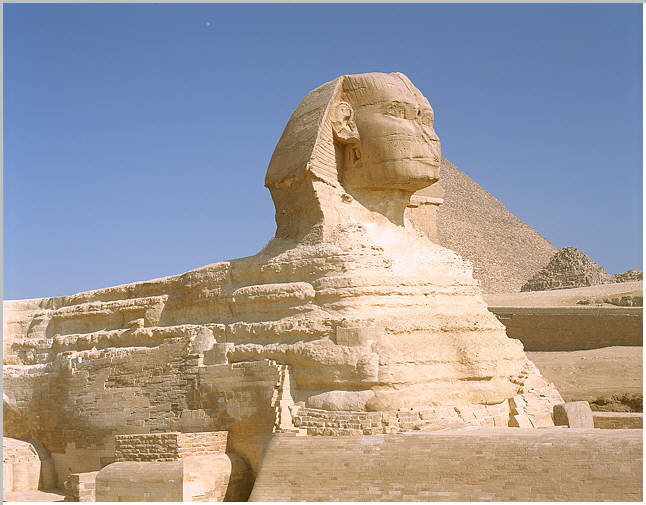
Here we see a detailed view of the front part of the Sphynx. The head is out of proportion with the rest of the body. This is explained by some Egyptologist by the fact that the ancient Egyptians carved it this way due to the geology of the local limestone. The bottom part of the Sphynx has been recently covered with limestone blocks. This was a project of the Egyptian department of antiquities and was unveiled to the public in May of 1998. The heady erosion on the body is quite evident here. This stone is softer and erodes quicker. The controversy of the age of the Sphynx is centered around some deluvial erosion features visible as vertical "gullies' on the body. If the Sphynx has been truly buried in the sand, as it appears to be. How were these alluvial erosion features created? Every few decades there some very strong rains in the Cairo area, but with the Sphynx buried in the sand they should not be has pronounced as is the case.
The Sphynx Body